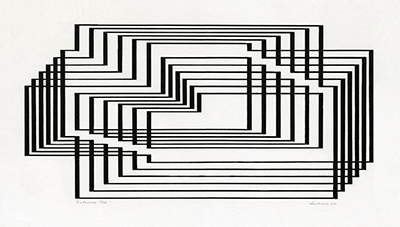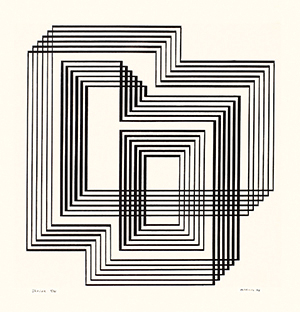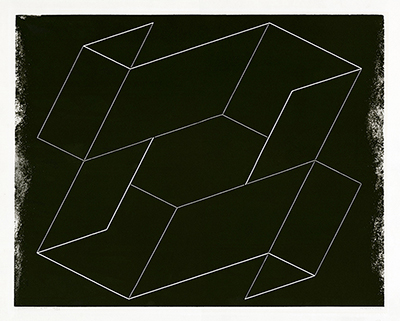|
|
|
Josef Albers was among Europe’s most influential artist-educators to immigrate to the United States during the 1930s. Following early academic training, Albers turned in 1920 to the innovative atmosphere of the Weimar Bauhaus, where he began his experimental work as an abstract artist. After only three years as a student, he was hired to teach the Vorkurs—the introductory class that immersed students in the principles of design and the attributes of the materials they worked with. Albers directed his students to develop an understanding of "the static and dynamic properties of materials...through direct experience." In his work, Albers investigated color theory, composition, and mathematical proportions as a means of achieving balance and unity. Yet, Albers did not approach his work from a purely intellectual perspective; he believed that “Art is spirit, and only the quality of spirit gives the arts an important place in life."
Initially an expressionist, Albers began experimenting with abstract principles and diverse materials in 1923. Through his sophisticated glass assemblages of these formative years he explored the qualities of balance, translucence, and opacity.
Faithful to the Bauhaus throughout the institution’s moves from Weimar to Dessau, and then to Berlin, Albers’ association with the renowned institution endured for more years than any other artist. In 1933, when the Nazis forced the closing of the Berlin Bauhaus, Albers left for America, where he introduced Bauhaus concepts of art and design to the newly formed experimental community of Black Mountain College in North Carolina. After fifteen years at Black Mountain, in 1950, he became chairman of the Department of Design at Yale.
In 1949, Albers began his now famous Homage to the Square series. Always a careful craftsman, he often noted the pigments, brands, varnishes, and grounds he used, as well as documented his spatial proportions and the mathematic schemes he incorporated in each work. Although concerned with a highly formal regiment in his own work, Albers supported other approaches: "Any form [of art] is acceptable if it is true," he stated. "And if it is true, it's ethical and aesthetic." Albers believed art to be a means for the "adjustment of the individual as a whole to community and society as a whole" and in the particular validity of "learning to see" not only for artists and designers but to be "beneficial for all, including doctors and lawyers." He challenged engineers to be "imagineering." As a theoretician and teacher, he was an important influence on generations of young artists.
In addition to painting, printmaking, and executing murals and architectural commissions, Albers published poetry, articles, and books on art. A major Albers exhibition, organized by the Museum of Modern Art, New York, traveled in the United States, South America, and Mexico from 1965 to 1967. A retrospective of his work was held at the Metropolitan Museum of Art in 1971. Albers’ work is held in numerous important private and museum collections throughout the United States and Europe. |



